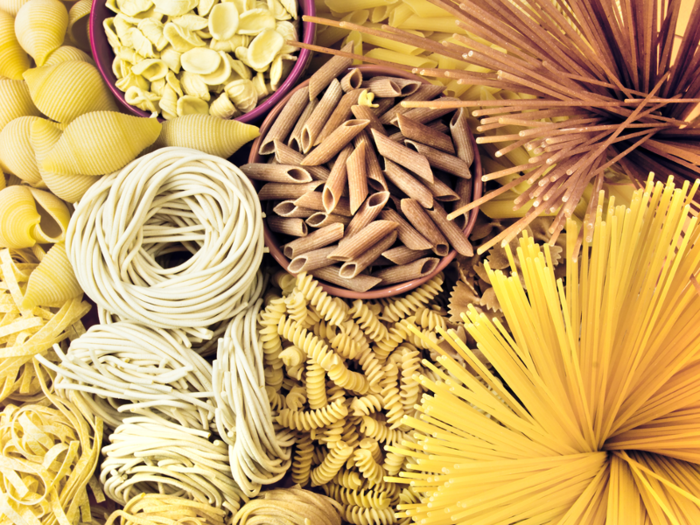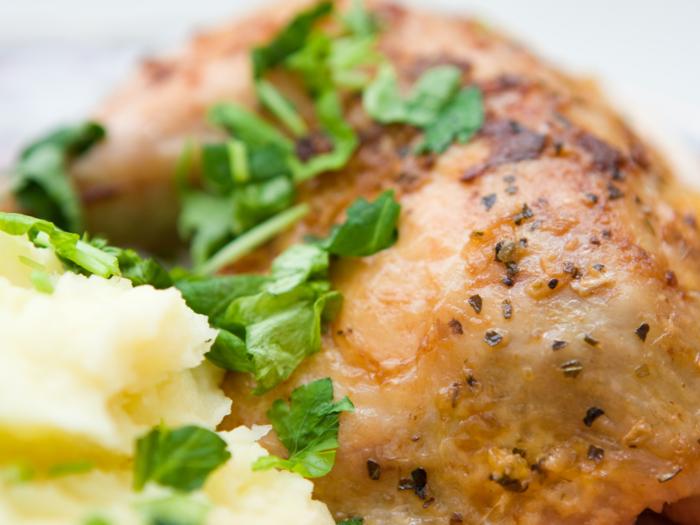- Home
- slideshows
- miscellaneous
- How I cook a healthy and delicious dinner for 4 every night for $300 a month
How I cook a healthy and delicious dinner for 4 every night for $300 a month
Where you shop matters

Figure out when to buy in bulk and when to pick and choose

Buying foods in bulk is great as long as you're not wasting in bulk as a result. (Or forcing your family to eat the same foods seven nights a week!)
It only makes sense to buy certain foods in bulk. Dried staples like rice, pasta, flour, and other such foods keep for months without refrigeration and make ideal bulk purchases. When you see a great price on rice, stock up. Get the biggest bag of flour you can find. Keep the pantry full of pasta. And so forth.
On the other hand, some foods should be purchased with specific meals in mind. Leafy greens tend to wilt quickly and can't really be frozen, thus making them a poor choice for bulk buying. Don't worry about a great deal on a huge box of salad if you're likely going to toss most of it anyway; go for the bag that's half the price despite being a quarter of the quantity and you'll probably end up spending wisely.
Then there are a lot of foods that fall into an in-between category; they keep pretty well for days, but won't stay good for weeks. In this category we find many fruits and veggies, breads, dairy products, and more.
Some fruits freeze well for later use in smoothies or baked goods, so go ahead and get berries and bananas, for example, any time you see a good price or whenever your fruit supply runs low. Carrots, potatoes, and onions keep well but don't freeze well, so buy according to your meal plan, selecting as many as you need from loose bins, not buying in pre-weighed bags. Other vegetables, such as broccoli and cauliflower, taste fine when cooked from frozen, so go ahead and buy them from the frozen aisle and know they'll be ready when needed.
Most meat freezes well as long as you get the air out of the bag to avoid freezer burn. I'm not big on buying pre-frozen meat, largely because I get impatient while thawing, but this is often a good way to get good prices on your protein.
The long and short of it is you should buy as much food as you know you're going to eat based on your planned menus, and only stock up beyond that on things that can freeze or that keep for long periods without special storage.
Cook cheap foods in fancy ways

You can make a four-person serving of restaurant-quality mashed potatoes for about $4. Add baked chicken and roasted garlic broccoli and the meal goes up to a whopping $12, give or take.
Seriously, though, with $1.50 worth of potatoes, about $.25 worth of butter and sour cream, a 50-cent scoop of dried chives, and maybe a half-dollar's worth of milk, you'll have awesome mashed potatoes. (Leave a bit of the skin on the potatoes before mashing — this makes them feel fancier for some reason.)
Boneless, skinless chicken breast will cost you about $1.99 per pound if you shop well, so figure each diner gets an ample serving of roasted chicken and we're maybe up to ten bucks, likely still lower. And finally add half a bag of broccoli florets bought frozen and baked with a dusting of garlic powder (call that a quarter), we've arrived at $12 for a home-cooked meal that will nourish and satisfy. (Maybe add a few nickels more for a tablespoon of balsamic vinegar drizzled over the chicken)
This cheap food/fancy cooking paradigm works in almost countless ways. Boring old rice becomes exciting when you fry it with a bit of oil and toss in diced onion, peas, corn, and, chicken. A $2 box of pasta, a $4 jar of sauce, and a handful of shredded mozzarella makes a zesty baked ziti; add a bag of salad and you've got a fine, filling meal for about $11.
Popular Right Now
Popular Keywords
Advertisement